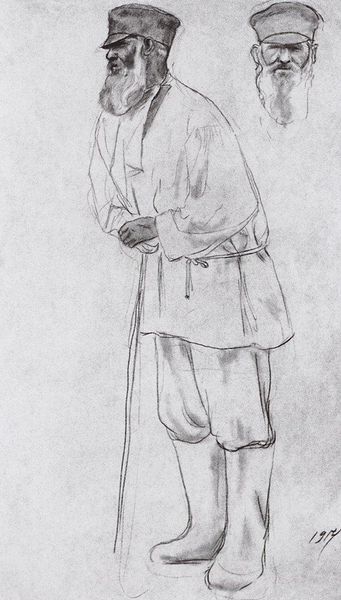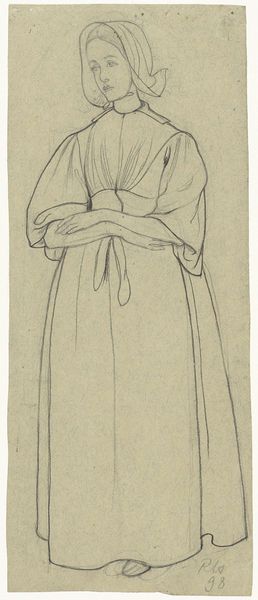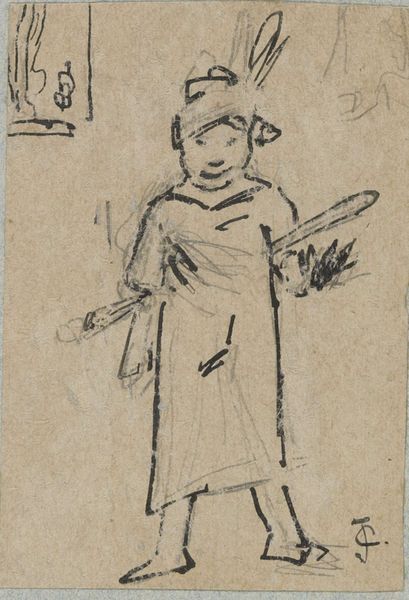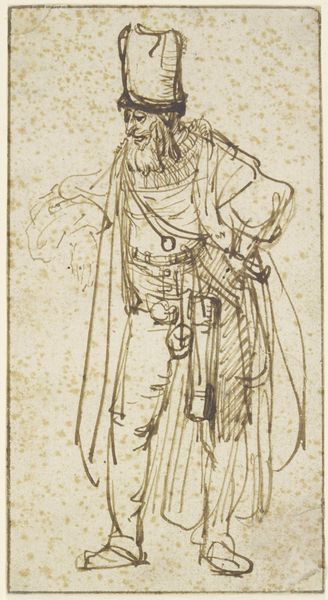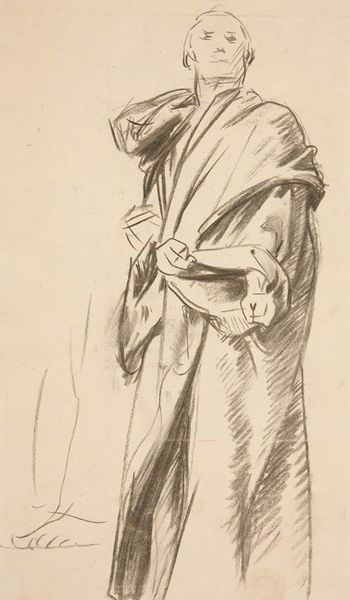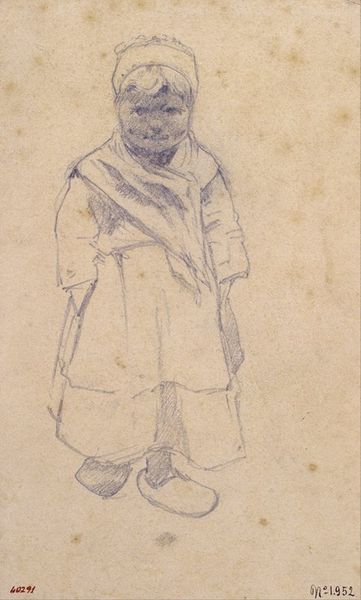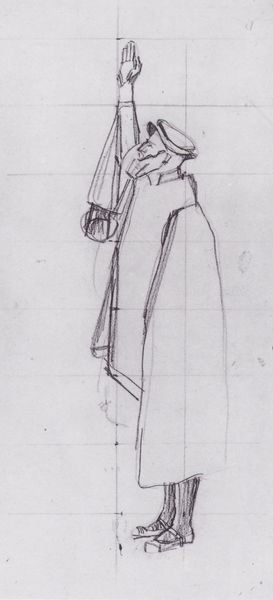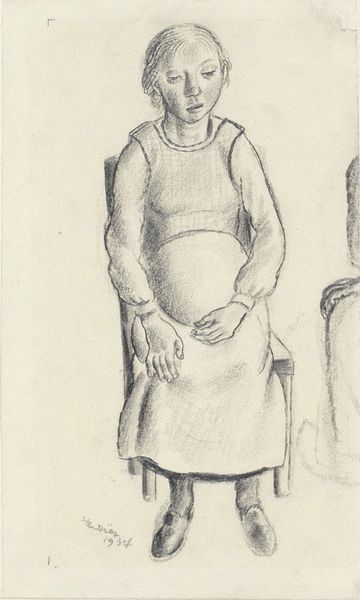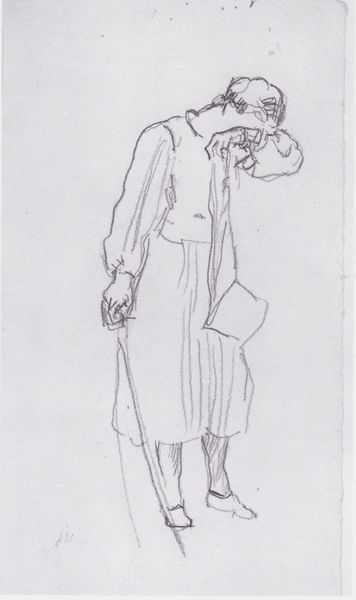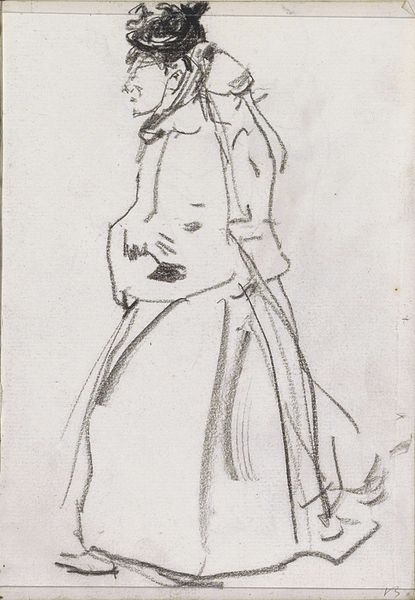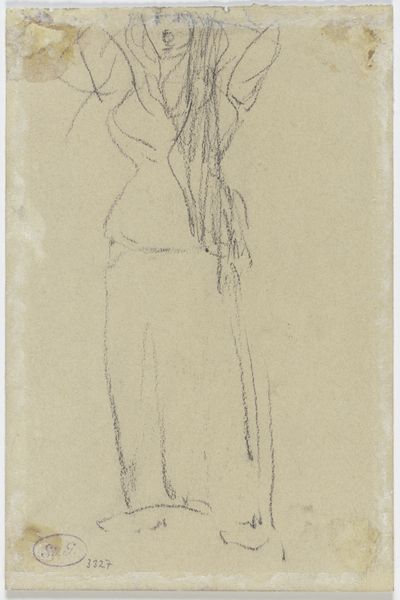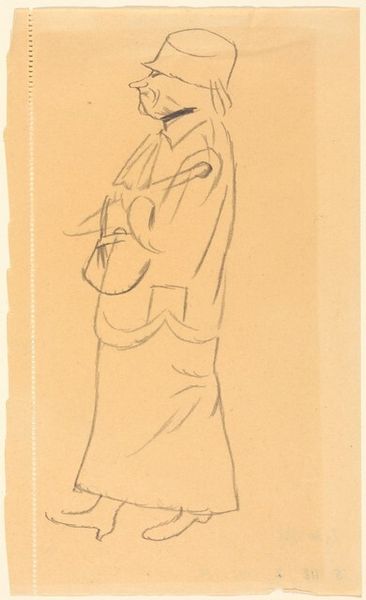
drawing, pencil
#
portrait
#
drawing
#
vienna-secession
#
figuration
#
sketch
#
pencil
#
mythology
#
symbolism
Dimensions: 41 x 25.5 cm
Copyright: Public domain
Curator: Before us we have Koloman Moser's 1915 pencil drawing, "Figure study of Tristan." There’s such haunting melancholy radiating from this piece. What strikes you? Editor: The starkness of the material - just pencil on paper - adds to that feeling. You see every mark, every layer, revealing the artistic process itself, almost raw. I'm interested in the very minimal use of shading - and I would go so far as to say that there are errors in proportion visible on the thighs of this figure. Curator: Fascinating that you notice that breakdown, and consider that within this piece there is also this incredible exploration of myth and identity, specifically thinking of the tragic figure of Tristan from Arthurian legend. I see the raw pencil lines, yes, but they connect, for me, to a vulnerability and disillusionment after all that love and violence in the Tristan story. A masculinity stripped bare. Editor: Yes! Look at the material qualities then: the loose tunic barely covering him, exposing his limbs, which is such a directness to it, removing the pomp we might associate with the ideal heroic male figure of that period. It brings a sense of the physical world intruding upon that idea. How much did it cost to obtain the materials - how easily could this piece have been disposed of? It almost appears as though this could have been constructed by a manual labourer. Curator: Absolutely, the figure is decidedly unidealized. Think too of the cultural context: Moser, emerging from the Vienna Secession, pushing back against academic tradition. How does the choice of pencil – a readily available, unassuming tool – underscore this rejection of grandiose artistic conventions, or even expectations for representation of this specific mythological hero? And it was also during wartime - World War I - in 1915! What does it mean for this sort of tragic hero to appear vulnerable during a time of cultural anxiety? Editor: Well, wartime always has an impact on resources, thus affecting how - and where - things get made. His status seems to become less about valor and strength - and more about endurance in spite of the circumstances. Is that why this appears to be made from life and thus a sketch of someone known, to Moser, intimately? That may speak to a desire to make work that has social connection that is also materially direct. Curator: It gives the legend real pathos, right? Viewing "Figure study of Tristan" reveals those connections between vulnerability, mythology, material limitations and also socio-political turmoil. It seems such a prescient way to portray and investigate questions of masculine identity at a pivotal point in modern history. Editor: Agreed. To think that such simple tools of production, employed in a traditional sketching methodology can become charged by cultural and historical significance - it certainly reframes how one views those basic means.
Comments
No comments
Be the first to comment and join the conversation on the ultimate creative platform.
